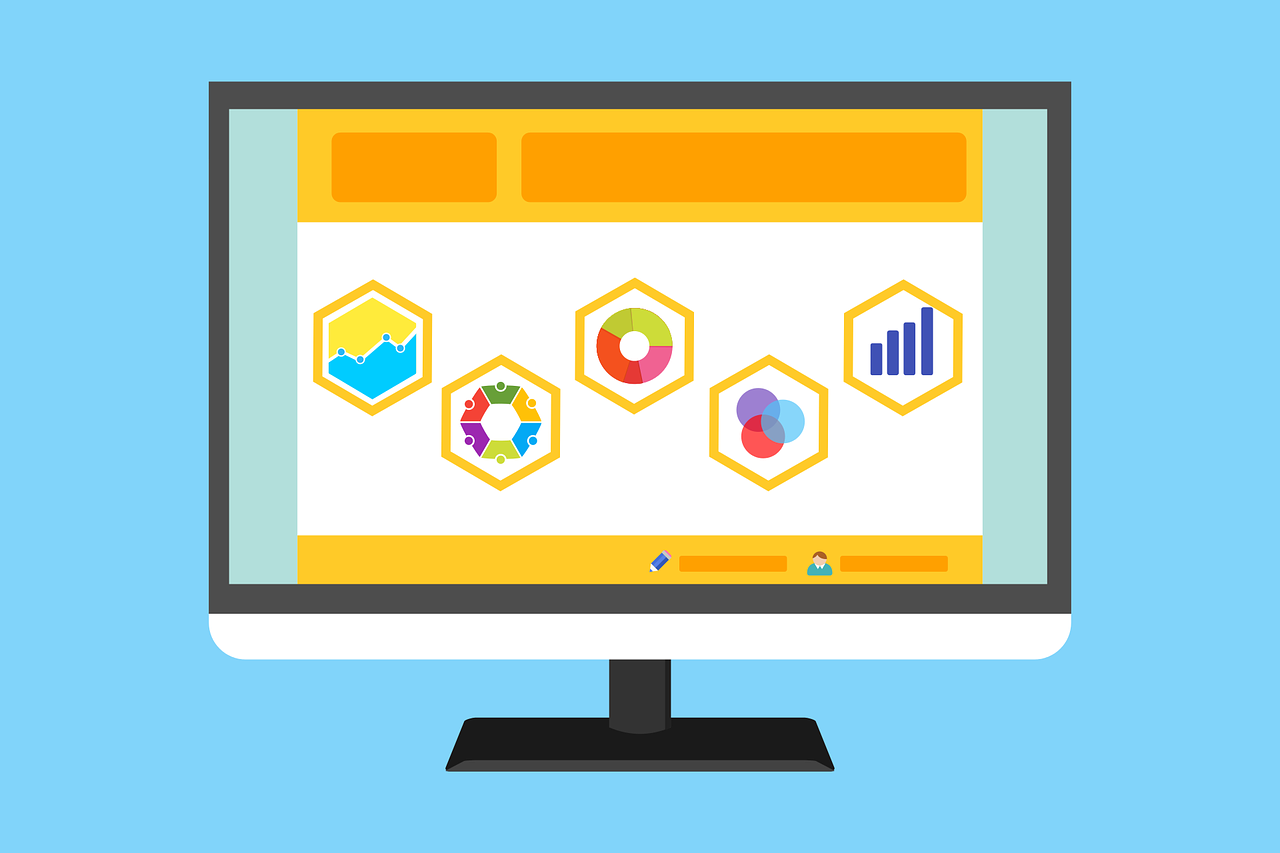Benchmarks act as reference points to measure the effectiveness of your social media efforts, helping you move beyond simple metrics and narratives such as “engagement is down this month” and providing a clearer comparison of how your performance stacks up against your goals or industry standards.”
Many social media managers are asked by their leadership team for insights relating to competitors and the wider industry, especially when presenting their own data reports or requesting budgets. If this is you, here’s the answers you need!
Industry reports can serve as a useful tool for setting benchmarks and gaining context on where your business stands in relation to the larger market.
However, metrics such as engagement rates, follower growth, impressions, reach, and clicks should be evaluated not just against industry standards, but also through custom or personalised benchmarks tailored to your audience, objectives, and past performance.
Industry benchmarks provide useful context and a broader perspective, but relying solely on them can limit your ability to truly assess what’s working for your brand.
Using Industry Reports
Industry reports provide a bird’s eye view of social media, giving you an overview of trends and performance across various platforms and industry sectors. They are often taken from a snapshot of data over a short period of time.
They allow businesses to stay informed about general market conditions, competitor performance, and emerging trends within the industry. By offering insights into the broader landscape, these reports can help businesses identify opportunities, understand consumer behaviour patterns, and inform strategic decisions.
Here are some industry reports that can be useful:
Data Reportal
Data Reportal offers comprehensive digital reports, updated quarterly. It’s my primary source of go-to-data and you’ll often see these presented in my webinars and workshops.
Each report includes data for individual social media platforms, often with information about the performance of different content types, such as Instagram Reels Vs Carousels, and also variations in results by account size (follower numbers). Here’s some examples:
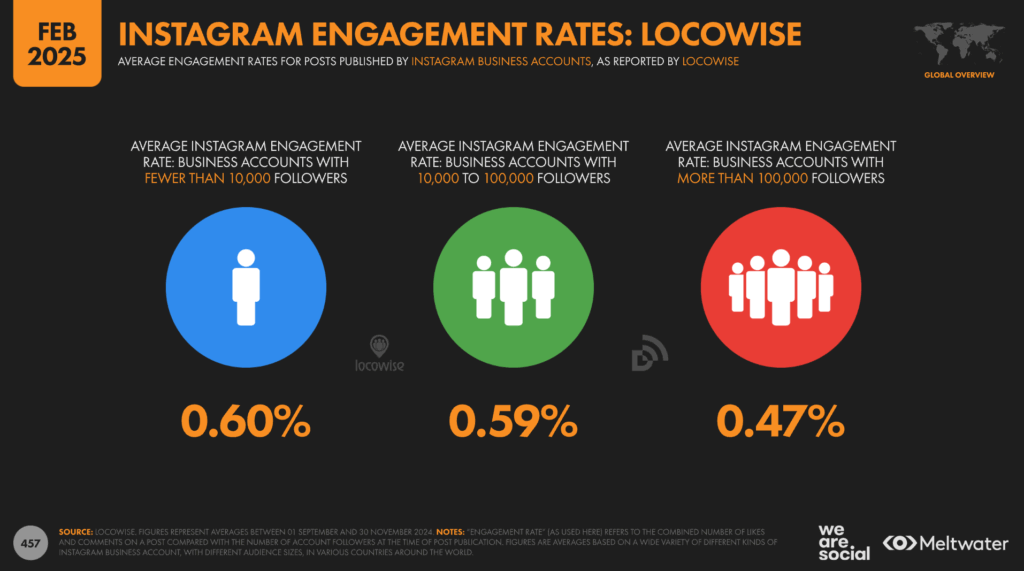
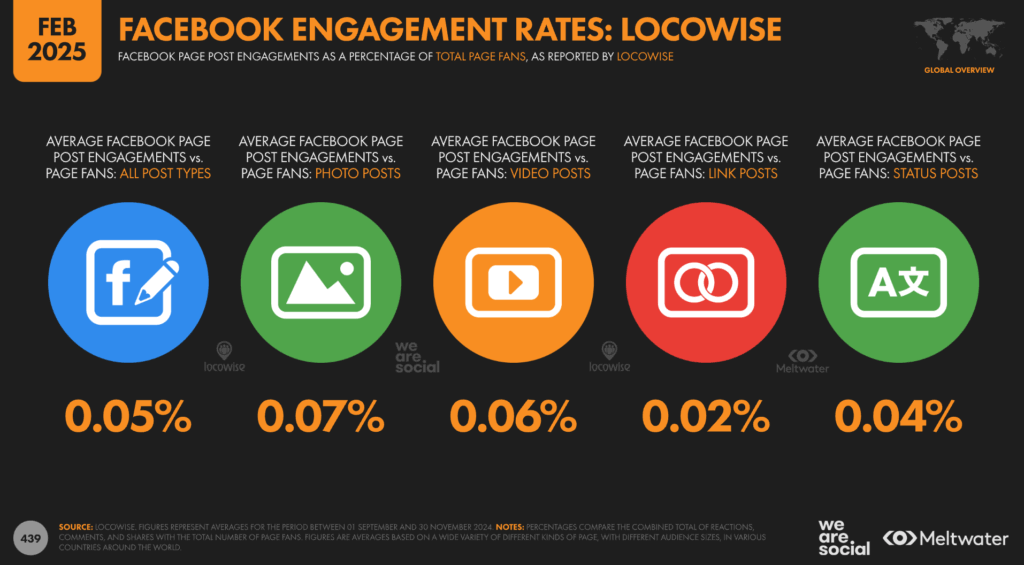
Social Insider
Social Insider’s 2025 Social Media Benchmark include engagement rates, impressions, likes, comments, shares, and posting frequency benchmarks based on an analysis of 125 million social media posts from 2023 to 2024.
The website also offers various benchmark reports by platform, including Facebook, Instagram, TikTok, and X (formerly Twitter).
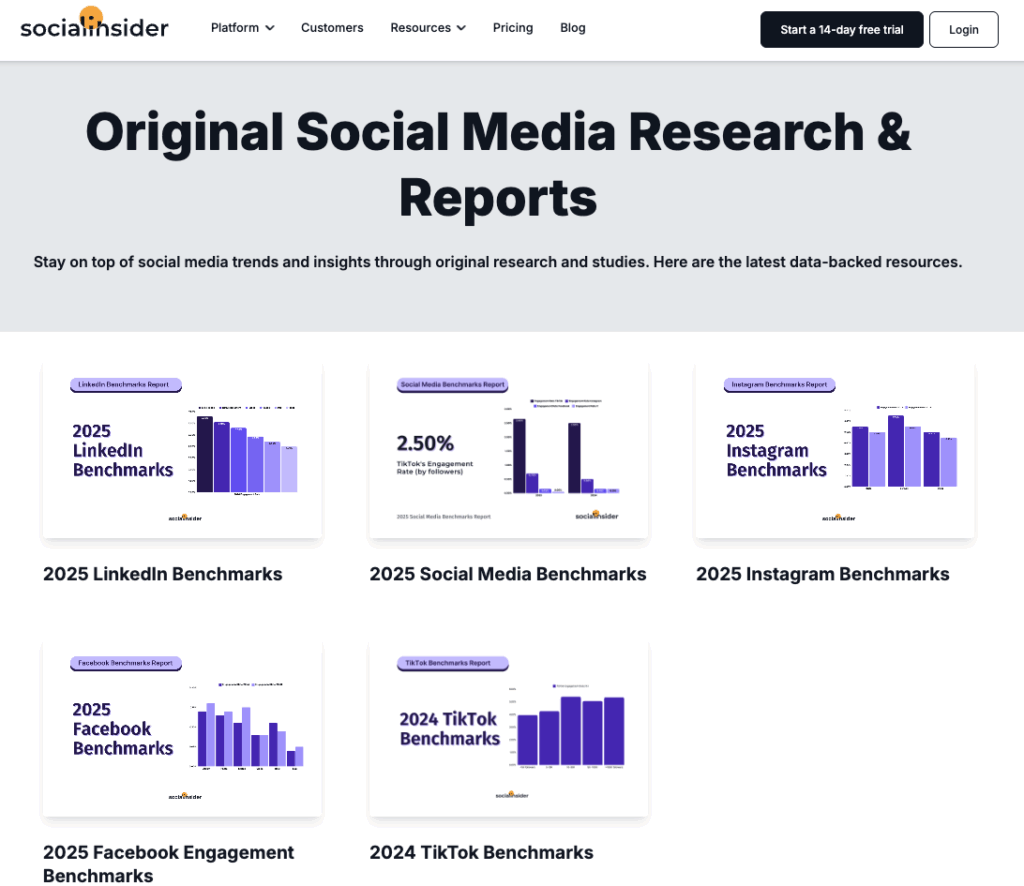
RivalIQ
RivalIQ provide benchmark reports across various platforms and sectors.
Recent reports include:
- 2024 Top 100 Nonprofits on Social Media
- 2024 Higher Education Social Media Engagement Report
- 2024 TikTok Benchmark Report
- 2024 Instagram Stories Benchmark Report
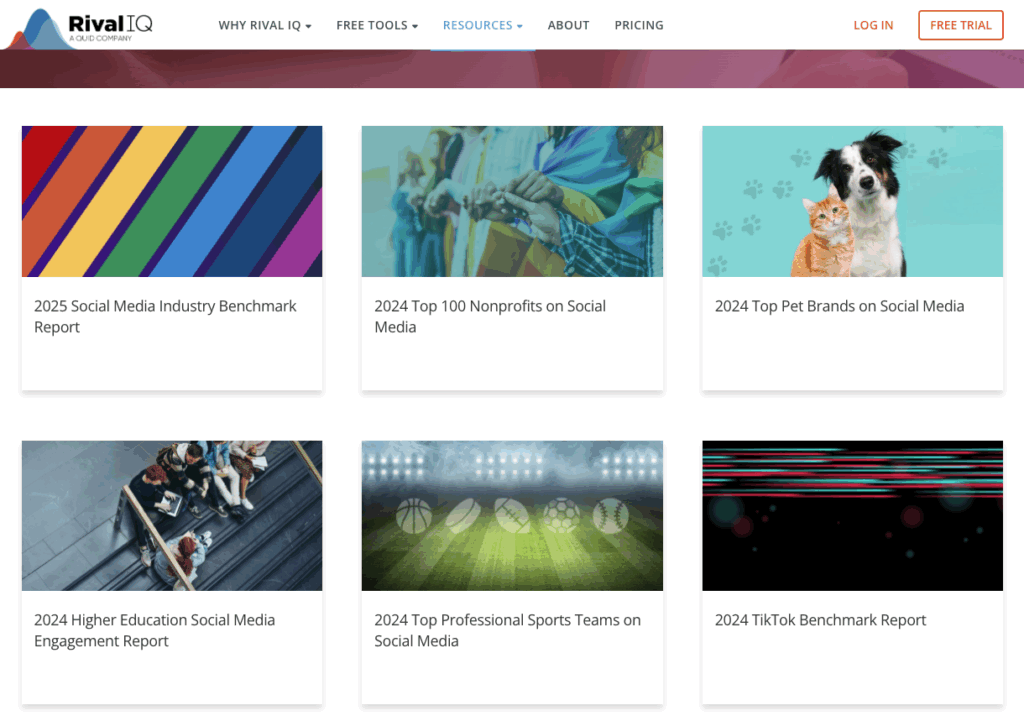
The importance of personalised benchmarks Vs industry reports
While industry reports provide valuable insights, they can oversimplify trends by offering averages that may not reflect the specific needs of your business. These reports often focus on broad data that might not align with niche sectors or specialised campaigns.
Here’s why:
- Reflects True Audience Engagement: Your audience is unique. By analysing your own social media data, you create benchmarks that truly reflect how your audience interacts with your content.
- Sets Realistic Goals: Personalised benchmarks allow you to set realistic and achievable goals based on your past performance and future goals.
- Enables Accurate Measurement of Progress: When you use personalised benchmarks, you’re comparing your performance to data that’s relevant to your brand. This allows for a more accurate assessment of what’s working and what isn’t, making it easier to adjust efforts in line with your marketing objectives. Custom benchmarks also provide actionable insights that are directly applicable to your business.
- Adapts Over Time: Industry reports can be dated, but your business and social media activities and reporting are in real-time.
How to Set Social Media Benchmarks
Start by reviewing your previous social media data to establish a baseline. Look at metrics such as engagement rates, follower growth, reach, impressions, and clicks. This will give you a starting point and help you understand where your brand currently stands.
If you don’t have previous social media data to establish a baseline, this is where industry reports are most useful. These reports can provide valuable benchmarks that offer insights into general trends and standards within your industry.
From there, identify what success looks like for your business. Are you aiming to increase engagement, grow your audience, or drive more website traffic? Tailor your benchmarks to these specific goals so you have a clear target to measure progress against.
Using your own data as a reference point allows you to create benchmarks that are directly relevant to your brand’s objectives and audience, helping you track and refine your performance effectively.
You can also turn back to industry reporting and trend data to add context to your benchmarks. These resources can provide insight into how your performance compares to broader trends or competitors, giving you a more well-rounded perspective.
Regularly reviewing and adjusting your benchmarks based on your own data and industry insights ensures that your social media efforts stay aligned with evolving trends, audience needs, and business goals.
Conclusion
Using social media benchmarks is a powerful way to improve performance by providing clear, measurable targets that align with your unique goals.
By comparing your results to both historical data and industry standards, you gain valuable insights into what’s working and where there are opportunities for improvement.
Regularly tracking and adjusting your benchmarks ensures that your social media efforts stay relevant, effective, and adaptable to changing trends. Ultimately, setting and monitoring personalised benchmarks enables you to refine your approach, make data-driven decisions, and drive continuous growth, helping you achieve long-term success on social media.
Need help setting your own social media benchmarks or reviewing industry reports? Get in touch

